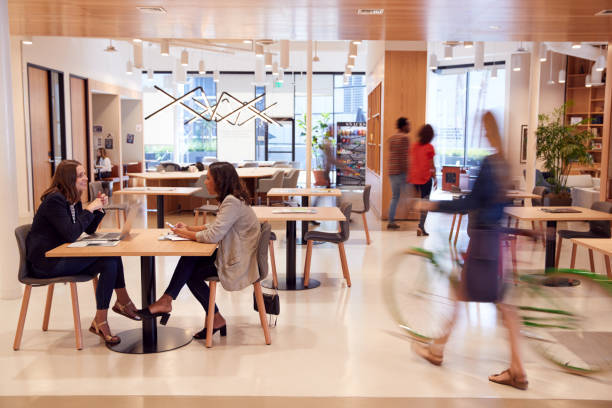
How Flexible Workspaces Are Reshaping London’s Office Market
3 October 2025 By Falmouth Fairfax
Flexible workspaces have become a defining feature of the modern office landscape, particularly in London. Offering shorter leases, ready-made fit outs, and hybrid-friendly layouts, they appeal to companies seeking agility in a post-pandemic world. While the model itself isn't new, the scale of its growth - and the structural shifts it's prompting - are now having measurable impacts on the wider office sector.
London remains the UK’s centre of gravity for flexible workspace. As of 2024, it accounts for around two-thirds of national flexible office take-up. Average desk rates rose to £514 per month in early 2024, marking an 8.8% year-on-year increase, while occupancy across London flex spaces consistently sits above 80%. Demand is strongest in well-located, high-amenity spaces that can accommodate changing working patterns.
This rise in flexibility is prompting broader changes across the office market. Traditional landlords are feeling the pressure as occupiers increasingly favour shorter commitments and adaptable layouts over long leases. For many companies, particularly SMEs and startups, a fully serviced space offers a lower-risk way to retain presence in central locations. Even larger occupiers are using flex space to complement their core offices, creating more decentralised portfolios that align with hybrid work.
The consequences for London’s conventional office stock are significant. As demand concentrates in premium, sustainable buildings, older or lower-quality assets face rising vacancy and falling rents. Without investment, many of these spaces risk obsolescence. Industry estimates suggest that over £40 billion may be needed to bring London’s aging stock up to the standards now expected by occupiers. This is pushing more landlords to consider refurbishments or partnerships with flexible workspace providers as part of broader asset repositioning strategies.
The geographical pattern of demand is also shifting. While the City and West End remain strongholds, flexible workspaces are gaining traction in outer London zones and commuter towns. Businesses are balancing central prestige with cost savings and accessibility for employees, contributing to the rise of distributed office footprints.
Looking beyond the capital, similar trends are evident - albeit at a smaller scale - in cities like Manchester, Birmingham and Bristol. However, London remains the key testing ground for what the future of office use looks like. As more occupiers adopt a mix of core offices and flexible space, the lines between the two are blurring. It’s no longer a question of whether flexible workspaces will compete with traditional offices - they are increasingly embedded within the same buildings, owned or operated by the same landlords.
The overall picture is not one of replacement, but of rebalancing. Flexible workspace is now a mainstream component of the office market. Its growth is accelerating the divide between high-performing, future-proofed buildings and those at risk of being left behind. For landlords, developers and investors, the challenge will be to align their assets with evolving occupier expectations - chief among them, flexibility, sustainability and quality.
Sources: Office Hub, The Instant Group, Rubberdesk, Prime Office Space, Financial Times
